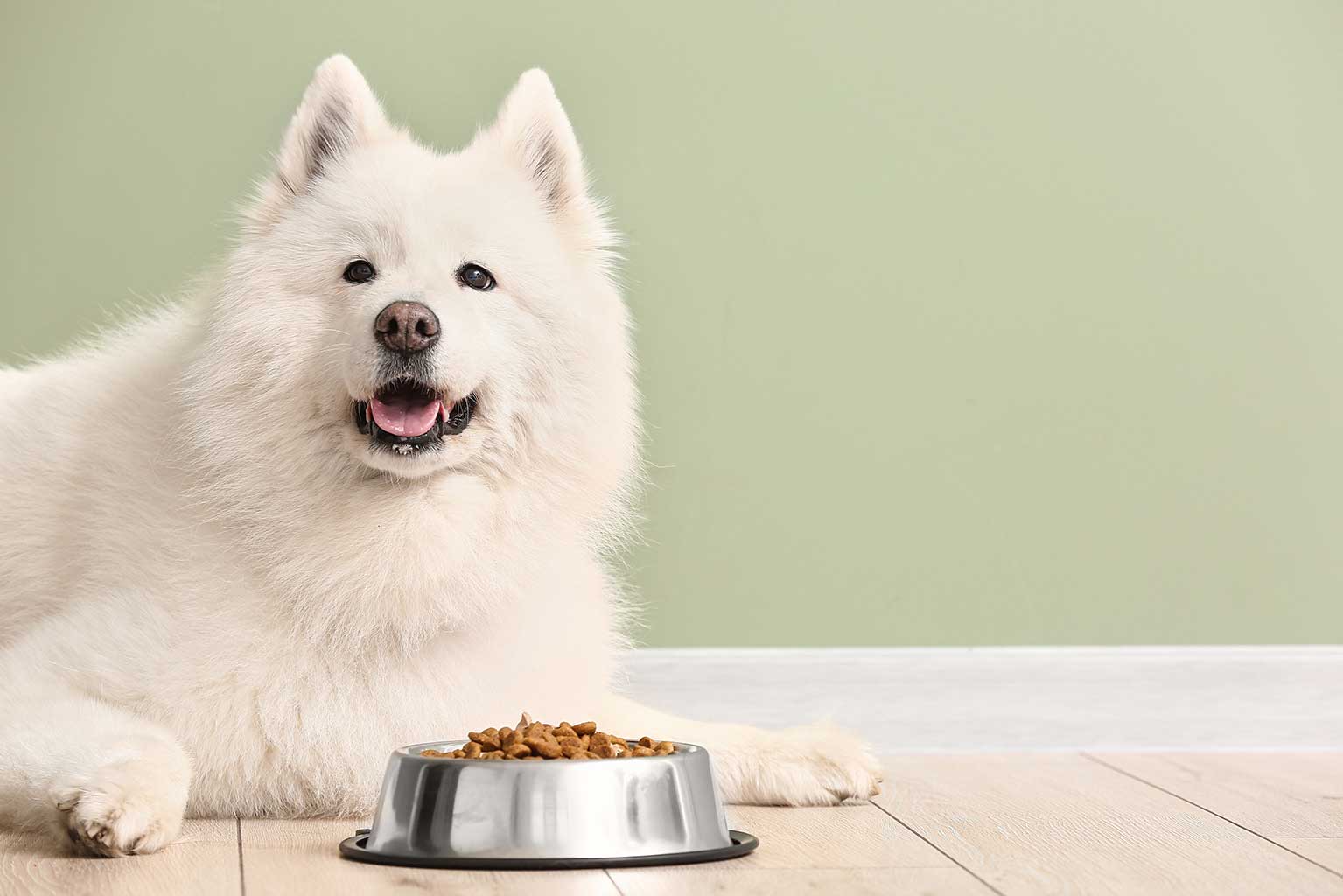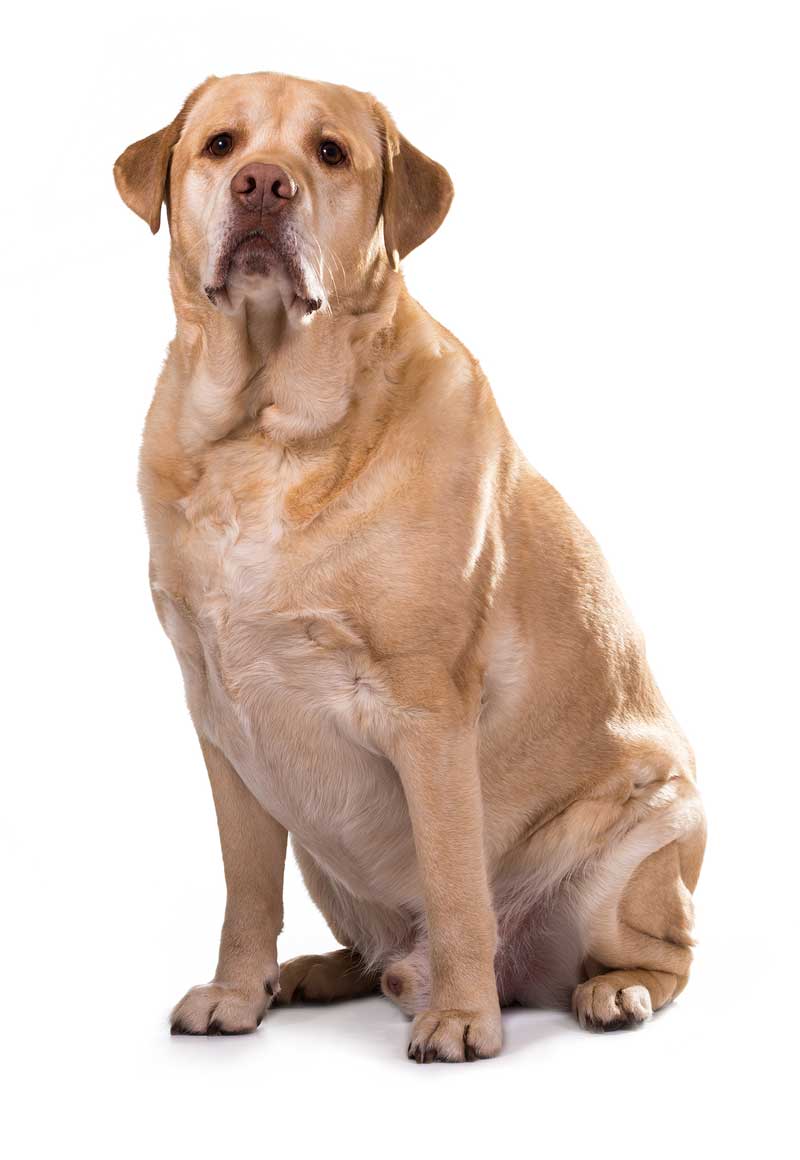Studies show that dietary management to reduce calorie intake is more effective than increasing exercise at inducing weight loss (Chapman et al, 2019). Indeed, increasing exercise alone did not result in weight loss.
26 Jun 2023
Advancements in diets controlling pet obesity and owner compliance
Mike Davies outlines the latest dietary strategies studied for use in cats and dogs – and why pet owners must stick with it.

Image: © pressmaster / Adobe Stock
Despite concerted efforts by the veterinary profession to improve average bodyweight in dogs and cats since the mid-1980s (Edney and Smith, 1986), obesity remains one of the most common pet diseases in the UK (German, 2006).
While breed genetics have a role to play – especially in some breeds, such as the Labrador retriever, which can lack a gene responsible for satiety – it is generally accepted that owner provision of excessive calorie intake and inadequate exercise are also major contributory factors in what is a multidisciplinary disorder.
Specially formulated diets have been shown to be very effective at reducing and controlling bodyweight, and can be successfully deployed to prevent obesity in susceptible animals and to obtain weight loss in overweight animals (Flanagan et al, 2017).
In this article, the author will review how these diets are formulated to control weight gain and obtain weight loss, and also new studies published during 2022 and 2023.

Dietary strategies
Dietary modifications demonstrated to be effective at preventing excess bodyweight gain and reducing weight in obese dogs and cats, and to mitigate against secondary metabolic consequences, include the following:
Simply reducing the amount of a maintenance food can be successful in inducing weight loss, as demonstrated by Keller et al (2020), in whose study weight loss was achieved in 56 out of 67 dogs (84%), losing a median of 4.7% (range 15.2% loss to 10% gain) of their starting bodyweight (SBW).
Weight loss was also seen in all 17 cats, losing a median of 6.4% (range 2% loss to 15.2% loss) of SBW. However, this strategy resulted in less than National Research Council-recommended intake of some essential nutrients, including choline, potassium, riboflavin and selenium.
Nutrient concentrations need to be increased in low-calorie weight loss diets to ensure adequate intake. Reduced food intake also causes begging behaviours, so strategies to improve satiety, such as inclusion of high fibre, water or air, can be used.
In addition, in obesity, fat metabolism is adversely affected, resulting in hypertriglyceridaemia and hypercholesterolaemia, both of which can be moderated by reducing dietary fat intake.
Obese cats are predisposed to develop acute hepatic lipidosis during weight loss, and providing 25% of calories as protein has been shown to reduce both lipid accumulation in hepatocytes and elevation of liver enzymes during rapid weight loss (Biourge et al, 1994). Maintaining lean body mass also reduces the risk of rebound weight gain.
Providing food with low glycaemic index ingredients, low simple sugars, high complex carbohydrates and high fibre reduces the level of postprandial hyperglycaemia, and mitigates against these undesirable metabolic changes (Jackson et al, 1996; Graham et al, 1994; Nelson et al, 1991).
- Controlling the content of magnesium, phosphorus and protein in dog foods; magnesium and phosphorus in cat foods.
- Formulating a food that produces an acid urine pH of 6.2 to 6.4, which prevents struvite crystal formation.
- Gene expression modification.
Some nutrients can modify gene expression by up-regulating or down-regulating their activity. This can result in metabolic changes inducing weight loss by reducing appetite, increasing energy expenditure and reducing inflammation.
Recommending foods
The author only recommends veterinary diets that have scientific evidence in the form of randomised controlled studies that demonstrate efficacy.
The author would never recommend homemade rations, because of the difficulty of ensuring compliance with FEDIAF minimum nutritional guidelines.

Compliance
To achieve compliance with veterinary advice, it is helpful if pet guardians accept the importance of avoiding excessive weight because of its negative impact on their pet’s health (Kamleh et al, 2020; Bland et al, 2009).
A new study (Montoya et al, 2023) reinforces this issue by reconfirming that obesity significantly reduces life expectancy in dogs and cats. Obese dogs (body condition score 5 out of 5; BCS) had a significantly lower life expectancy from birth (11.71 years; range 11.66 to 11.77 years) than overweight dogs (BCS 4 out of 5; 13.14 years; range 13.12 to 13.16 years), and dogs with ideal BCS 3 out of 5 (13.18 years; range 13.16 to 13.19 years).
The life expectancy from birth of cats with BCS 4 out of 5 (13.67 years; 13.62 to 13.71 years) was significantly higher than cats with BCS 5 out of 5 (12.56 years; range 12.45 to 12.66 years) or BCS 3 out of 5 (12.18 years; 12.14 to 12.21 years).
In a Canadian study, obesity has been shown to be a risk factor for appendicular osteosarcoma (Williams et al, 2023). In earlier studies, adverse effects of obesity included impaired renal perfusion with increased markers of glomerular and tubular damage (Liu et al, 2020); increased plasma oxidative stress, impaired heart rate variability and reduced cardiac systolic function compared to non-obese dogs (Pongkan et al, 2020; Bouthegourd et al, 2009); and that weight loss in obese dogs can induce positive changes in salivary proteins associated with immunity, inflammatory status, oxidative stress, and glucose metabolism (Lucena et al, 2020).
Weight loss has been shown to influence the gut microbiota composition (Kim et al, 2023) and reduce the inflammatory response and oxidative stress (Vecchiato et al, 2023).
Compared to lean dogs, obese dogs showed higher serum concentrations of acute-phase proteins, total thyroxine (TT4), and antioxidant capacity. Dietary management affected the faecal microbiota of obese dogs, decreasing the abundance of Firmicutes and increasing Bacteroides species. However, these changes did not significantly affect the dysbiosis index (DI).
Caloric restriction alone failed to exert significative changes on a large scale on bacterial populations, so the DI, bacterial diversity indices and metabolites were unaffected in ob ese dogs.
Caloric restriction was not associated with a reduction of inflammatory markers or an improvement of the antioxidant status, while an increase of TT4 was observed.
Restricted feeding (Oba et al, 2023) led to reduced bodyweight, BCS, fat mass, and blood cholesterol, triglyceride, glucose, and leptin concentrations, and increased muscle condition score and lean body mass percentage. Faecal metabolites, and bacterial alpha-diversity were affected by diet and weight loss.
In a small study (El-Wahab et al, 2023), four diets were fed to eight dogs (experimental design: 4×4 Latin square) for a 14-day period each.
In addition to a basal diet, three experimental diets varying in fibre sources were used: powdered cellulose (CE), granulated cellulose (GC), and lignocellulose (LC). Dogs fed the control diet had lower crude fibre digestibility than those fed the other experimental diets (p-value less than 0.0033).
Dogs fed diets supplemented with fibre sources had lower gross energy digestibility (range 76.2% to 77.3%) compared with those fed the control (84.4%).
In all groups, the faecal score (consistency and shape) ranged within the optimal values; solely wet faecal output was increased for the fibre groups compared with those on the control diet.
This study demonstrated that various sources of fibre, such as GC and LC, can be used as alternatives to CE without restrictions.
In one study (Bian et al, 2023), it was suggested that canned foods may be more beneficial than dry food at controlling weight gain after feline castration, but many of the parameters claimed to be beneficial did not achieve statistical significance of p-value less than 0.05.
Lack of compliance with veterinary recommendation remains an important factor. In an online cross-sectional study of 1,402 dog and cat owners in the US and Canada, clients were concerned about the effectiveness of veterinary nutrition recommendations.
Cat owners were more likely than dog owners to consider the nutritional guidance they receive from veterinarians effective for their pet’s diet (1.75; p-value 0.04).
In the same study, length of pet ownership, feeding dry diets and frequency of veterinary visits were all positively associated with owners considering nutritional guidance to be effective in managing pets’ diets.
Conclusion
While obesity remains such an important disease, many more innovative developments will undoubtedly be made in the area of dietary control.
However, as in human medicine, unless owners accept their role in preventing the problem, it is difficult to predict when we might actually make an impact on this devastating problem for our pets.
